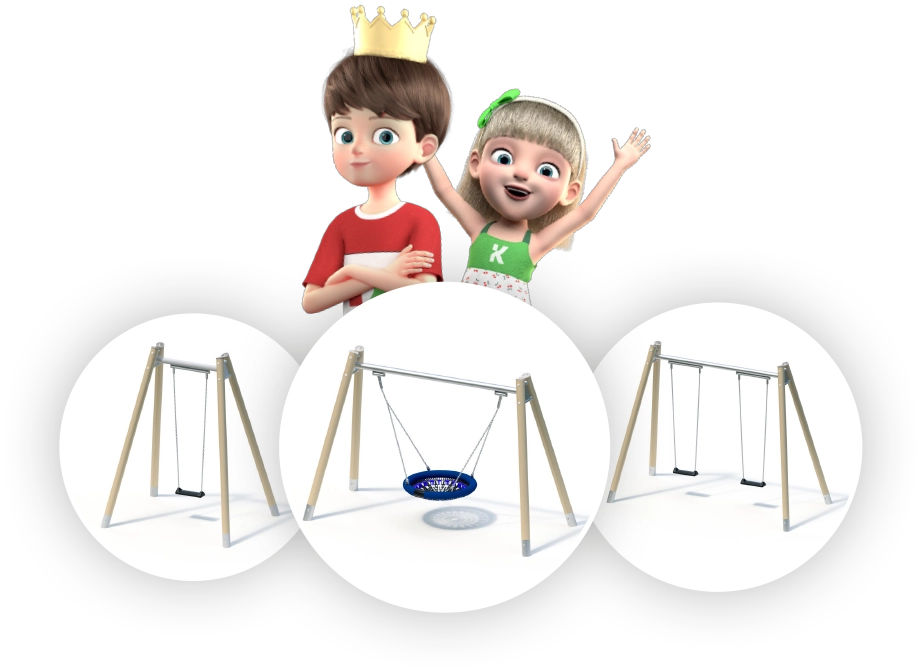Our FAQ
Questions and Answers about Kaiser & Kühne and our Product Range
What is KAROLAM®?
K&K has further developed laminated timber in collaboration with a research project.
The result, KAROLAM® (KAiser RObinie LAMinated) laminated timber, now combines all the advantages of the durable wood species without having to adopt the natural growth defects of robinia.
What are the advantages of robinia laminated timber?
No rotten spots, fewer and significantly smaller cracks:
K&K uses robinia laminated timber because it is a building material with largely minimized cracking. Our robinia laminated timber is made from pre-sorted timber that has been freed from defects. The spiral grain, which is often visible in cracks in solid wood, is eliminated by several constructive steps. The individual lamellae are pre-dried to 12-14% before gluing and thus also freed from the particularly high stresses in robinia wood.
During gluing, the lamellae are positioned in such a way that residual stresses in the wood material cancel each other out as completely as possible.
Higher load-bearing capacity and larger construction lengths and heights:
Because it is made of dried wood and has a multi-layer structure, the laminated timber also has up to 50% higher load-bearing capacities than conventional solid wood. This allows us to have larger construction lengths or heights. Post lengths of up to 14 m can be achieved.
Better surfaces with greater durability:
The consistent industrial production of the laminated timber via sorting, drying, defect removal, gluing and round milling enables us to achieve a significantly higher surface quality of this material. The round-milled posts are sanded with a 240 grit and provided with a specially developed surface finish (in use on posts and platforms since May 2009). This improved treatment increases the service life of the wood and the UV stability of the natural wood color of the robinia, primarily due to the beading effect. The previously known "graying" of the wood surface is eliminated.
What post materials/or bases does Kaiser & Kühne supply?
1. Robinia laminated timber KAROLAM® Ø120 raised with the pipe base Art.-No. 6290138 (depending on length)
2. Stainless steel tube Ø120 x 3 mm 1.4301 (bright + alternatively powder-coated)
What is laminated timber (BSH) or glued timber?
Laminated timber (BSH) generally refers to at least three approx. 30 to 40 mm thick, fiber-parallel glued and dried boards or lamellae made of wood. Laminated timber is an optimized timber building material with greater durability and longevity. Glued timber or glued laminated timber are synonyms for laminated timber.
What is robinia laminated timber?
In the case of robinia laminated timber, the lamellae consist of pre-dried robinia. K&K uses six approx. 22 mm thick board lamellae. The KAROLAM® product developed by K&K is a special robinia laminated timber. Laminated timber in general has been standardized in structural engineering for decades. Here, spruce is mostly used, which is unsuitable for outdoor use as required for playground equipment - freely exposed to the elements - (without a roof, etc.). Hence our own development KAROLAM®. KAiser RObinie LAMiniert. This name is protected as a trademark.
What is robinia wood?
The robinia, native to the southeastern USA, is now the most frequently cultivated deciduous tree worldwide after eucalyptus and poplar species, predominantly with the aim of improving the soil (nitrogen input) and stabilizing dumps. Reforestation for the purpose of wood production exists primarily in Southeast Europe with the largest areas in Hungary and Romania.
The wood of the robinia has excellent technical properties, a high natural durability and often a decorative appearance. Due to a mostly poor trunk shape and small diameters or lengths, no larger quantities of robinia wood are currently available for regular industrial processing. The supply on the European market is also likely to remain limited in the near future.
